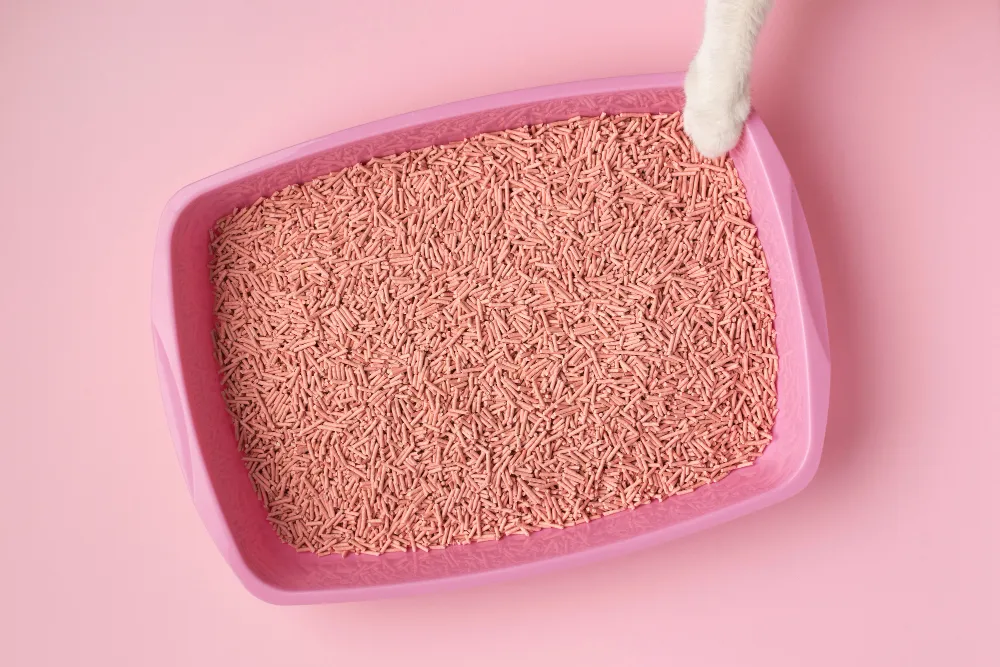
How to Train Your Kitten to Use the Litter Box
If a cat pees or poops in the corner of the room or on the floor, it can be very irritating and may spread germs. That is why it is important to train them to use a specific place for this purpose. You can use a litter box to solve this problem.
Kittens over four weeks old can be litter box trained, but they will not be fully trained yet. Kittens between 8 and 12 weeks of age can be fully litter box trained.
First, you need to introduce your cat to the litter box. Let them explore and play with it. It usually takes around 5 to 10 days for a cat to become fully accustomed to using a litter box.
You should place the litter box in a quiet area. For training, place your kitten in the litter box for a while so they can get familiar with it. Once they become familiar with the litter box, they will start using it.
If that doesn’t work, you can take their poop and place it in the litter box so they can smell it and understand that this is where they need to go.
Why Is My Cat Not Using the Litter Box?
If a cat gets used to the litter box, they will use it regularly. However, if a cat suddenly stops using the litter box, it can be a cause for concern.
Cats may stop using the litter box for various reasons:
1. Litter Box Issues
If there is a problem with the litter box, the cat may refuse to use it.
Common litter box problems include:
- The litter box is unclean.
- The litter box is too small.
- The litter is not changed regularly.
Litter Box Size:
- The length of the litter box should be 1.5 times the length of the cat and 13 to 15 inches in width.
- Litter boxes should be 2 to 3 inches high for kittens and 4 inches high for adult cats.
To prevent problems, you should clean the litter box regularly, change the litter frequently, and use a litter box that suits your cat’s size and comfort.
2. Litter Box Location
It is very important to place the litter box in the right spot. You should place it in a quiet area with minimal human traffic, where the cat feels safe.
If the cat does not feel safe in that area, they may refuse to use the litter box.
3. Environmental Changes
Cats may stop using the litter box if their environment changes.
Some examples of environmental changes that can affect litter box usage include:
- Moving to a new home
- Bringing home a new cat
- Changes in furniture placement
- Construction work in the home
If your cat stops using the litter box due to an environmental change, you may need to retrain them in the new environment.
4. Medical Issues
If a cat suddenly stops using the litter box, it may be due to a health problem. That’s why it’s important to monitor their behavior and consult a veterinarian if necessary.
How to Clean the Litter Box
Keeping your cat’s litter box clean is very important. If the litter box is dirty, the cat may refuse to use it.
Here are some tips to keep the litter box clean:
1. Scoop Daily
Use a scoop to remove the cat’s pee and poop daily. Remove the wet litter and keep the dry litter in the box. If the litter is too wet, the cat may avoid using it.
2. Wash the Box Weekly
Wash your cat’s litter box thoroughly once a week using lukewarm water and mild detergent. Make sure no wet litter or waste sticks to the box. Dry it thoroughly after washing.
3. Change the Litter Regularly
- If you have one cat, change the litter completely every two weeks.
- If you have multiple cats sharing the same litter box, change the litter weekly.
- Ideally, provide a separate litter box for each cat.
What Can I Use Instead of a Litter Box?
If you don’t want to buy a litter box, you can use other alternatives.
1. Cardboard Box
- Choose a comfortable-sized cardboard box.
- Cover the bottom with a plastic bag.
- Fill it with litter up to the required level.
2. Oven Tray
- Choose an oven tray that matches your cat’s size.
- Fill it with litter, leaving some space unfilled.
What Can I Use Instead of Cat Litter?
If you don’t have cat litter, you can use alternative materials for training your cat.
1. Sand
- Sand is absorbent and can be used instead of litter.
- You should remove wet sand immediately to prevent odor.
2. Paper
- Cut paper into small pieces and place them in the litter box.
- Remove the paper immediately after the cat pees or poops to prevent bad smells.
3. Other Alternatives
Other materials that can be used instead of litter include:
- Wood shavings
- Chicken feed
- Cloth pieces



